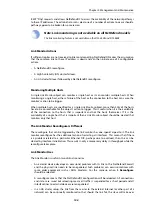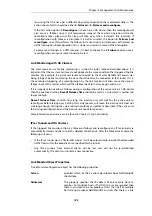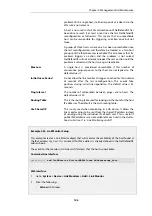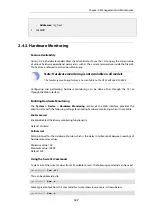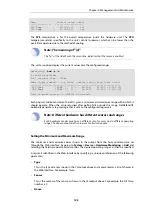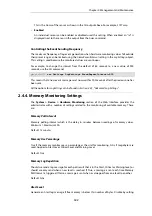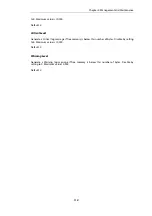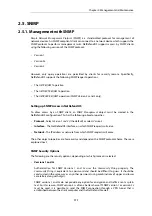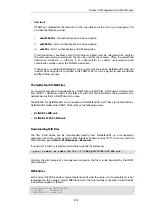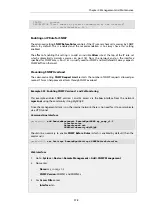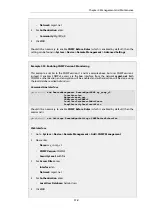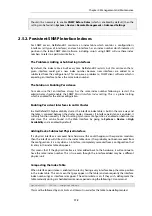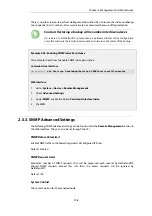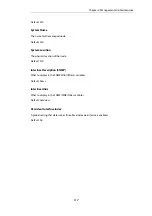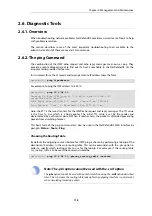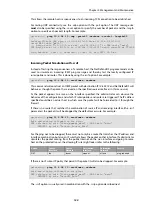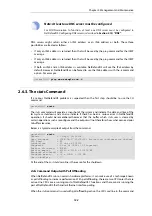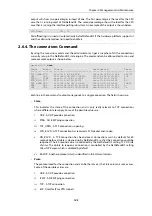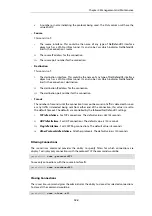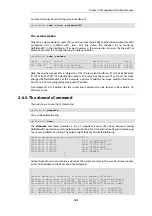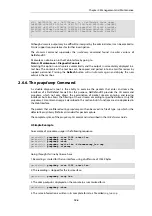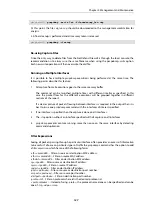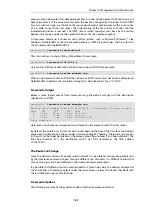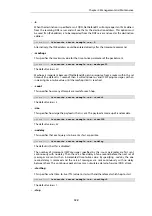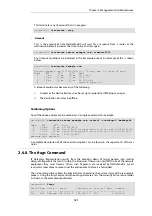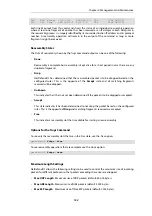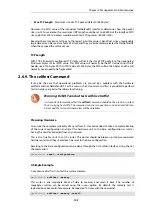
2.6. Diagnostic Tools
2.6.1. Overview
When troubleshooting network problems, NetDefendOS provides an assortment of tools to help
with problem resolution.
The section describes some of the most important troubleshooting tools available to the
administrator. Most of these are used as CLI commands.
2.6.2. The ping Command
The combination of the ICMP echo request and echo reply messages are known as
ping
. They
provide a simple diagnostic tool to find out if a host is reachable. In the NetDefendOS CLI, the
ping
command provides this feature.
In its simplest form, the CLI command to ping a remote IP address takes the form:
gw-world:/> ping <ipaddress>
For example, to ping the IPv4 address
10.6.58.10
:
gw-world:/> ping 10.6.58.10
Sending 1 4-byte ICMP ping to 10.6.58.10 from 192.168.3.20
using PBR table "main"
ICMP Reply from 192.168.1.1
seq=0
time=<10 ms
TTL=128
Ping Results:
Sent: 1, Received:1, Avg RTT: 10.0 ms
Here, the
RTT
is the
round trip time
for the ICMP echo request and reply messages. The
TTL
value
is the
Time To Live
which is a hop counter. The initial TTL value is set by the sender and
decremented by each router passed. When it reaches zero, the packet is discarded preventing
packets from circulating forever.
This basic form of the ping command can also be used in the NetDefendOS Web Interface by
going to: Status > Tools > Ping.
Choosing the Routing Table
By default, the outgoing source interface for ICMP ping is chosen by performing a lookup of the
destination IP address in the
main
routing table. This can be overridden with the
-pbr
option in
order to specify which routing table to use for the lookup. For example, if the routing table
my_routing_table
is to be used, the command would be:
gw-world:/> ping 10.6.58.10 -pbr=my_routing_table -verbose
Note: The -pbr option cannot be used with the -srcif option
The
-pbr
option cannot be used with packet simulation using the
-srcif
option described
later. This is because the routing table lookup for the outgoing interface is not relevant
when simulating incoming packets.
Chapter 2: Management and Maintenance
118
Summary of Contents for NetDefendOS
Page 30: ...Figure 1 3 Packet Flow Schematic Part III Chapter 1 NetDefendOS Overview 30 ...
Page 32: ...Chapter 1 NetDefendOS Overview 32 ...
Page 144: ...Chapter 2 Management and Maintenance 144 ...
Page 284: ...Chapter 3 Fundamentals 284 ...
Page 392: ...Chapter 4 Routing 392 ...
Page 419: ... Host 2001 DB8 1 MAC 00 90 12 13 14 15 5 Click OK Chapter 5 DHCP Services 419 ...
Page 420: ...Chapter 5 DHCP Services 420 ...
Page 573: ...Chapter 6 Security Mechanisms 573 ...
Page 607: ...Chapter 7 Address Translation 607 ...
Page 666: ...Chapter 8 User Authentication 666 ...
Page 775: ...Chapter 9 VPN 775 ...
Page 819: ...Chapter 10 Traffic Management 819 ...
Page 842: ...Chapter 11 High Availability 842 ...
Page 866: ...Default Enabled Chapter 13 Advanced Settings 866 ...
Page 879: ...Chapter 13 Advanced Settings 879 ...

